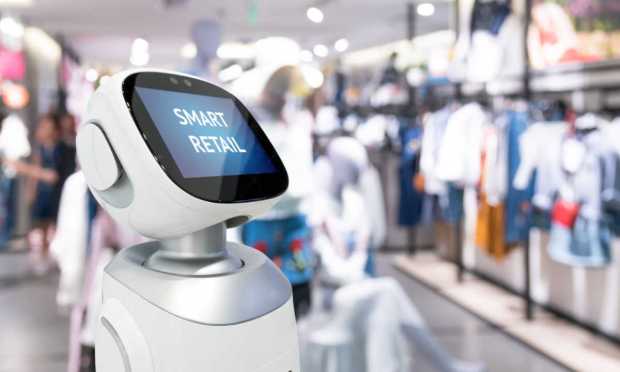EU Retailers Embrace Smart Delivery Robots to Boost Efficiency, Productivity

Currys is the latest retailer to test the use of customer service robots on the shop floor.
The U.K. and Ireland-based electronics retailer recently partnered with UX Global (UXG), a British digital display specialist to trial a customer assistance robot developed by Shenzhen-based company Pudu Robotics, known as “KettyBot.”
In a recent blog post, UXG touted the “endless” benefits retailers stand to gain from using robotics, including “boosting sales, reducing operational costs, improving efficiency, possibly generating advertising revenue and enhancing the in-store experience.”
Ainsley Sykes, head of commercial initiatives and retail design at Currys, said in the blog that the British retailer “saw an opportunity for KettyBot to enhance our in-store customer experience for those who know what they want but need a little helping hand in finding it in store.”
With an interactive screen and voice response, the smart delivery robot, which was originally designed for the hospitality sector and has integrated sensors that allow it to operate safely in crowded spaces, was used in four Currys stores to help locate items, freeing up store employees’ time for more complex customer service interactions.
The recent pilot is the latest example of Pudu’s robots being deployed in European retail settings.
Most notably, the company’s “BellaBot” model has been rolled out in several Polish Carrefour branches thanks to a partnership between the French supermarket and Pepsi, while German multinational chain of stores Mediamarkt has installed Pudu’s robots in the Netherlands to help customers navigate stores.
The Next Phase of Self-Service Retail
Pudu’s KettyBot and BellaBot adhere to a general distinction that has emerged in retail robot design and can be observed in the robots offered by U.S. companies like Orionstar and Bear Robotics as well as Spain’s Pal Robotics.
On the one hand, there are service robots often equipped with multiple shelves ready to be loaded with food and drinks for delivery to customers’ tables. On the other hand, more interactive bots like those deployed in the Currys pilot combine the best of self-service retail and tech-enabled customer assistance.
In another instance of innovation in retail automation, Jamba, a chain known for its smoothies and juices, has successfully rolled out fully autonomous smoothie stations in eight U.S. locations.
Jamba President Geoff Henry told PYMNTS in an interview that the benefits of the technology go beyond efficiency gains.
“The repeat rate has been very high,” Henry said. “We’re obviously tracking those who purchase and then come back and purchase again [and] benchmarking that relative to what we would expect versus industry standards, and we’ve been pleased.”
Beyond the benefits of reduced staffing costs, retail robots have some less obvious advantages to businesses too.
For example, the screens on Pudu’s robo-assistants can display ads, creating an alternative revenue stream for retailers that complements their primary business model.
For all PYMNTS EMEA coverage, subscribe to the daily EMEA Newsletter.
